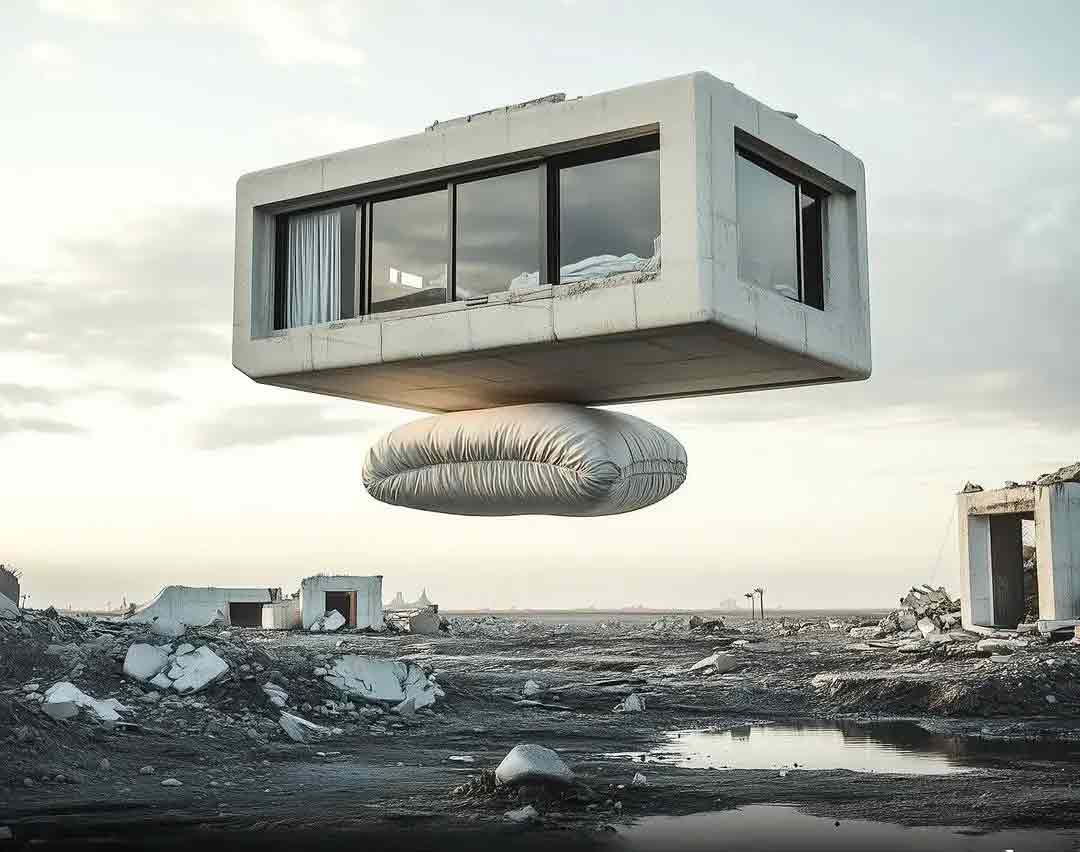Japan has always been at the forefront of earthquake-resistant housing, continuously seeking innovative solutions to protect its citizens from devastating seismic events. One of the most groundbreaking advancements in this area is the levitating house technology developed by Air Danshin Systems Inc. This unique system utilizes compressed air to lift homes off the ground during earthquakes, effectively minimizing damage.
With Japan being one of the most earthquake-prone countries in the world, this new technology has the potential to revolutionize the housing industry and set a new standard for seismic safety worldwide.
How Air Danshin’s Levitating House Technology Works
The Science Behind the Innovation
Air Danshin’s earthquake-resistant technology is designed to lift homes slightly off the ground when a tremor is detected. The system includes:
- Seismic Sensors: These sensors monitor ground movement and instantly detect seismic activity.
- Air Compressor System: When an earthquake is detected, the compressor rapidly inflates an airbag positioned beneath the house.
- Levitating Mechanism: The airbag lifts the entire structure approximately 3 centimeters off the ground, preventing it from experiencing the destructive shaking caused by seismic waves.
- Automatic Deflation: Once the earthquake subsides, the airbag slowly deflates, allowing the house to return safely to its foundation without any damage.
This technology differs from traditional seismic isolation methods, such as base isolators or shock-absorbing foundations, by actively responding to an earthquake in real time rather than relying solely on structural reinforcement.
The Effectiveness of Air Danshin’s Seismic Safety System
Tested During Real Earthquakes
Since its development, Air Danshin’s technology has been successfully implemented in hundreds of homes across Japan. One of the most remarkable demonstrations of its effectiveness occurred during a 7.3-magnitude earthquake, where homes equipped with this system remained undamaged.
Unlike conventional earthquake-resistant structures, which absorb or distribute seismic energy, Air Danshin’s levitating system eliminates direct contact between the ground and the house, drastically reducing structural damage and protecting residents.
Benefits of Levitating House Technology
- Minimal Structural Damage – By preventing the house from shaking, walls, floors, and foundations remain intact.
- Increased Safety for Residents – Reduces the risk of injuries caused by falling debris and collapsing structures.
- Cost-Effective Solution – Compared to traditional earthquake-resistant designs, this technology requires fewer structural modifications.
- Energy-Efficient and Low Maintenance – Once installed, the system functions autonomously and requires minimal maintenance.
The Future of Earthquake-Resistant Housing in Japan
Growing Adoption and Technological Advancements
As awareness of Air Danshin’s levitating technology spreads, more homeowners and builders in Japan are exploring its implementation. While initially developed for residential buildings, experts are now considering adaptations for commercial and public structures, such as schools, hospitals, and government buildings.
Innovators in Japan’s construction industry are also researching ways to integrate smart technology into the system, allowing homeowners to monitor and control the system remotely through mobile apps. This would further enhance safety and efficiency, ensuring homes remain protected even when residents are away.
Global Implications: Can This Technology Be Used Worldwide?
Countries with high seismic activity, such as the United States, Indonesia, and Chile, are showing interest in Air Danshin’s earthquake-resistant solutions. As the demand for more effective seismic safety systems grows, Japan’s innovation may become a global standard in earthquake-proof construction.
Additionally, government initiatives and disaster preparedness programs may support subsidies and incentives for homeowners to adopt this life-saving technology. The continued investment in earthquake-resistant housing solutions could lead to the development of even more advanced systems that further improve safety and reduce disaster-related damages.
Conclusion
Japan’s levitating house technology, pioneered by Air Danshin Systems Inc., represents a remarkable leap forward in earthquake safety. By using compressed air to lift homes off the ground during seismic events, this innovative approach minimizes structural damage and enhances the safety of residents.
With its proven effectiveness, affordability, and potential for widespread adoption, this technology has the power to transform earthquake-resistant housing worldwide. As Japan continues to lead the way in seismic safety innovations, the rest of the world watches closely, eager to embrace cutting-edge solutions that could save countless lives in earthquake-prone regions.
For homeowners looking to invest in disaster-resistant housing, levitating house technology offers a promising and practical solution to mitigate the devastating impact of earthquakes.
YAllA TV – www.yallatv.ae





